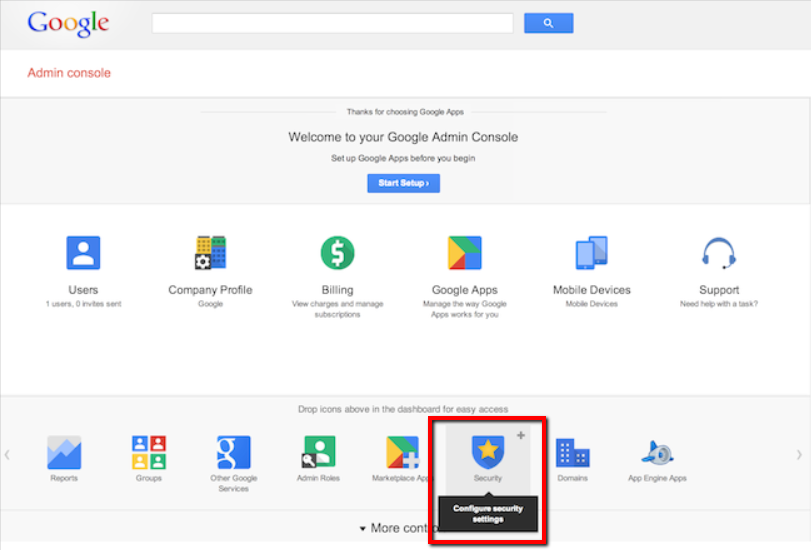
The Domain Certificate is the most affordable type of SSL and it is issued very quickly (normally in minutes). It is recommended for websites that handle little sensitive information. The certificate is not quite as stringent as Organization Validated and Extended Validated, and malicious bots can obtain it. So only use with sites with high traffic and primarily human users.
Domain Certification
You must own the domain in order to receive a certification. The CA verifies this by checking WHOIS for the domain. They may also provide a validation file which is placed on the web server. This will provide security and protect your customers.
DCV Verification Methods
There are a few different ways to complete domain validation, but the most popular method is through e-mail. Comodo will then send an email to the administrator of the domain with a unique validation link and code. Once the domain owner replies, Comodo will verify their domain and issue their certificate immediately.
You can also check the WHOIS record of your domain through DNSimple, which is free. This will allow you verify the email address that is associated with the domain when you send your CSR.

DV Multidomain SSL Certificates
If you wish to secure multiple domains using a single certificate, a DV-multi-domain certificate would be the right choice. It allows you to protect both internal and subdomains/domains externally under one installation with a single period of renewal.
Domain Registrar's Information
In this method, the CA will directly verify the domain ownership by looking up the information of the domain registrar. To avoid the CA rejecting the certificate, it is crucial that the information of the domain registrar is public.
This option can be enabled by selecting the "Upload File" button at the last step in the SSL activation procedure. The Certificate Authority then checks the file in each sub-folder on your server, and issues a DV SSL Certificate.
This process is lengthy, especially when you have a lot of FQDNs. You must ensure that all FQDNs have been added to the order prior to completing this step.
Domain Authentication
The CA will run a WHOIS search to verify the domain name belongs to the company or person who submitted the SSL application. The CA may send an email of verification to the admin contact or create DNS records to verify domain control.

Domain Authentication works for a broad range of applications - from small to medium businesses, non-profits and enterprise sites. It is ideal for companies that do not handle a lot of confidential data, as it does not involve any business background checks or personal identity verification.
To obtain a Domain Validation Certificate from the CA, you'll need to present your CSR with proofs of identity. The WHOIS record can provide the contact information and domain ownership details for a particular domain. Documents and company details are also acceptable. Our support team is happy to help you if you have questions or require assistance with creating your CSR.
FAQ
What is the cost of building a website?
This question will depend on your goals for your website. Google Sites may not be required if you simply want to provide information about yourself or your company.
However, if you want to attract visitors to your website, you'll likely want to pay for something more robust.
The most common solution is to use Content Management Systems (like WordPress). These programs enable you to create a website in no time. These sites are hosted by third-party companies so you don't have to worry about being hacked.
Another way to build a website is to use a service called Squarespace. There are a number of plans available, with prices ranging from $5 per Month to $100 Per Month depending on the features you wish to add to your website.
What is responsive web design?
Responsive Web Design (RWD) is an approach to designing websites where content displays responsively on all devices - desktop computers, laptops, tablets, smartphones, etc. This allows visitors to view the website on one device and access other features like buttons, navigation menus, etc. RWD aims to ensure that every user who views a site is able to view it on any screen size.
For example, if you were building a website for a company whose products sell primarily through eCommerce, you would want to ensure that even if a customer viewed your website on a smartphone, they could easily purchase items from your store.
A responsive site will adapt to the device used to view it. A website that is viewed on your laptop will display the same way as a desktop website. But, the page will appear differently if you view it on your phone.
This allows you to create one website that works on all devices.
How to Make a Static Site
You have two options when creating your first static site:
-
A Content Management System (also known as WordPress): WordPress is available as a download. Then you can use it to create an essential website.
-
Create a static HTML website: You'll need to code your HTML/CSS code. This is easy if you know HTML.
Consider hiring an expert to build your large website.
However, it is a good idea to start with option 2.
Is web development difficult?
Although web development isn't easy, there are many resources online that will help you get started.
All you have to do is find the right tools and then follow them step-by-step.
Many tutorials are available on YouTube and other platforms. You can also download free software online like Sublime Text or Notepad++.
Many books are also available in libraries or bookstores. These are some of the most well-known:
"Head First HTML & CSS" by O'Reilly Media
O'Reilly Media's Head First PHP & MySQL 5th edition
Packt Publishing, "PHP Programming For Absolute Beginners",
I hope this article was helpful.
What kind of websites should I make?
Your goals will determine the answer to this question. If you are looking to build a business from your website, it may be beneficial to focus on selling online products. To do this, you will need to create a strong eCommerce website.
Blogs, portfolios, as well as forums are some other popular web types. Each of these requires different skills and tools. For example, to set up a website, you need to understand blogging platforms such WordPress or Blogger.
Once you have chosen a platform, it is also important to determine how you can customize the appearance of your site. There are many themes and templates that you can use for free.
Once you've selected a platform to build your website, you can start adding content. You can add images, videos, text, links, and other media to your pages.
You can publish your website online once you have launched it. Visitors can view your site online once it has been published.
Should I use WordPress, or a website builder
It is best to start small in order to establish a web presence. If you have enough time and resources, build a site. If you don't have the resources to build a full-fledged site, a blog may be the best choice. As you learn how websites are designed and developed, you can always add more features.
Before you start building your website, it is important to establish a primary domain. This will allow you to point to your primary domain name when you post content.
Statistics
- It's estimated that in 2022, over 2.14 billion people will purchase goods and services online. (wix.com)
- Did you know videos can boost organic search traffic to your website by 157%? (wix.com)
- It's estimated that chatbots could reduce this by 30%. Gone are the days when chatbots were mere gimmicks – now, they're becoming ever more essential to customer-facing services. (websitebuilderexpert.com)
- In fact, according to Color Matters, a signature color can boost brand recognition by 80%. There's a lot of psychology behind people's perception of color, so it's important to understand how it's used with your industry. (websitebuilderexpert.com)
- When choosing your website color scheme, a general rule is to limit yourself to three shades: one primary color (60% of the mix), one secondary color (30%), and one accent color (10%). (wix.com)
External Links
How To
How to become a web developer?
A website does not simply contain HTML code. It's an interactive platform, which allows you communicate with users and provides valuable content.
A website is more than a medium for delivering information; it is a portal to your business. It should be easy for customers to find the information they need quickly, and it should also allow them to interact with your company in a way that is convenient.
The best websites make it easy for visitors to find the information they seek and then to leave.
To achieve this goal, you will need to develop technical skills as well as design aesthetics. You'll need to learn HTML5 coding and CSS3 styling as well as the latest developments in JavaScript.
InDesign, Photoshop and Illustrator are all tools that can be used to create and edit websites. You'll also need to create a style guide that includes everything, from fonts to colors to layout.
Begin by learning about the subject, taking online courses, and enrolling in college programs if you want to become a web developer.
It may take months or years for you to complete your degree. However, once you have a degree you will be ready to enter into the workforce.
Keep practicing! The better you get at designing, the easier it will be for you to build great websites.